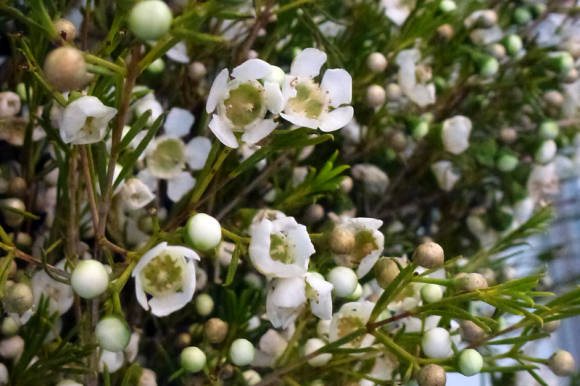
Unfortunately, medical science pays little attention to this plant. And practice shows that woodlice is a highly nutritious and vitamin product, a versatile drug that improves metabolism, including in seriously ill patients.
This annoying weed is found on almost every site. The gardeners have special scores with him. This plant got its popular name for an interesting feature - its hairs, covering the stem, retain moisture well after rain. That is why the plant is always moist.
Yes, this is not a mistake. We are talking about the very plant, against which all gardeners and gardeners spend so much effort, especially in wet and slightly shaded areas, not knowing at all that this plant has long been asking for salads and is an excellent addition to the main harvest and to home “ Ambulance".
This plant has many names. Botanists call it medium star (Stellaria media), people - woodlice, because it is always wet, and many villagers call it "bird salad" for the special love of geese, ducks, chickens and other poultry for this grass.
Wood louse is an annual herb with a recumbent, knotty, branched stem and small pointed leaves. Loves fertile, slightly shaded and moist beds, where it grows from early spring to late autumn, drowning out any seedlings of vegetables. The plant is unpretentious, not afraid of frost or drought. Under the snow, it leaves green and well-developed. Neither blizzards nor severe frosts are terrible for her. It is worth getting off the spring water, and it, as if nothing had happened, is alive and well.

Woodlice blooms from May to September, multiplying by seeds at an incredible rate, giving up to ten thousand seeds per plant per season. It is worth weeding a bed from wood lice, as in a week or two, shoots appear on it again, which in a month and a half, in turn, will begin to bear fruit.
Its seeds germinate already at a temperature of 3-4 ° C, and the lying long stems quickly take root in the nodes. In addition, the smallest piece of its stem in the soil takes root very quickly and gives a new plant. And so, one generation after another, racing, creating a continuous flowering carpet in those areas where the owner of the site does not fight with it or does not know how to fight.
But this very wood lice has wonderful nutritional and medicinal properties, which we often simply do not suspect. In terms of saturation with vitamins, it is not inferior to many cultivated plants. It contains up to 100 mg% vitamin C, i.e. one and a half times more than the noble and revered lemon. Vitamin salad made from its young tender leaves is especially useful for anemia and scurvy.
Woodlice contains a large amount of vitamin E, the most valuable for humans, which is contained in very little or absent in most cultivated plants in all your beds. Woodlice and carotene are exceptionally rich.
Woodlice should be eaten, not dealt with. You just need to remember that with the beginning of flowering, its stems are not very suitable for eating, since they become fibrous and tough like threads. It is for the exceptional usefulness of woodlice in Russia that our "illiterate" ancestors have always added to spring salads as an early green culture rich in vitamins. (See Star salad, Cottage cheese casserole with stars and carrots, Spring salad with stars, Vegetable soup with stars).

In folk medicine, among many peoples, woodlice has found its rather widespread use. Steamed woodlice grass in the form of compresses is applied to sore spots with radiculitis, with aching joints, sprains.
Woodlice stimulates the secretion of synovial fluid in the joint capsules, which can reduce pain when moving.Whether this effect or not, in any case, vitamin greens will be beneficial in the absence of toxicity. Woodlice juice improves cardiac activity, relieves nervous tension, reduces pain, reduces and dissolves tumors. It is also used as a styptic.
An infusion or fresh juice of woodlice is taken for diseases of the liver and lungs, chest pains, hemoptysis, hemorrhoids, for diseases of the thyroid gland, for gastrointestinal diseases, cirrhosis of the liver. Due to the presence of a large amount of vitamins in woodlice, it quickly restores human strength.
To prepare the infusion, you need 1 tbsp. pour a spoonful of dry grass with 1 glass of boiling water, leave for 1.5-2 hours, drain. Take 3-4 times a day before meals, 0.3 cups. And woodlice juice is taken 1 teaspoon 4-5 times a day, adding a little honey to it.
In folk medicine, the clouding of the cornea in the early stages of the disease is treated with fresh woodlice juice by instilling it into the eyes. No medication can help relieve fatigue from your feet like fresh woodlice grass, which you put in your garden shoes instead of an insole.
Outwardly, the herbal infusion is used for baths, lotions, compresses - it is believed that such baths strengthen the nervous system. Juice or infusion of woodlice is used to treat long-term non-healing and festering wounds.
As an external remedy for baths and washing, 12-15 tbsp. Pour 1 liter of boiling water over 1 liter of fresh grass, leave in a warm place for at least 1 hour, drain.
In summer, the vitamin greens of woodlice should be used in salads. To do this, you need to chop the greens of woodlice and onions, add a boiled egg and sour cream and ... the salad is ready.









